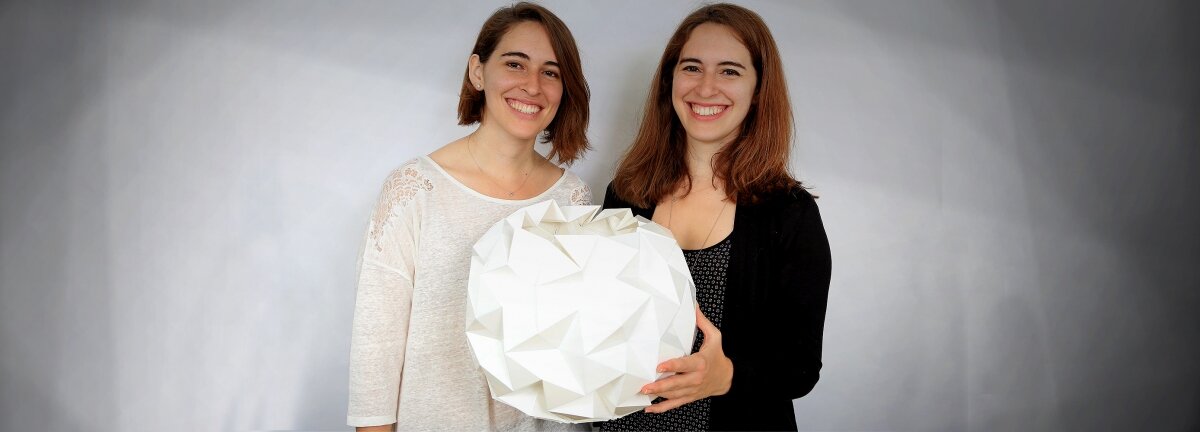Growth: Creating a sustainable design concept for the mass market

Good, human-centred product design does not contribute to landfill. That’s the sentiment deeply held by Bike and Begum Ayaskan, the London design sisters who were finalists in our Design Council Spark 2016 programme with their product Growth, the plant pot that grows with the plant. We spoke to Bike and Begun to discuss how Spark helped them to turn Growth into something that could be mass-produced, while still staying true to its sustainable nature.
After graduating from the Royal College of Art in 2015, sisters and design partners, Bike and Begum, followed their dreams and set up their own design studio. Their focus was on the production of limited edition objects that would withstand the rigours of use and fashion. Their products included clocks which trace the passing of time in natural materials like water and sand, bespoke indoor hydroponics that double as water features and of course, Growth, the one-of-a-kind plant pot that grows with its living inhabitant. Beautiful and elegant, it also negates the need for multiple, bigger plant pots as the plant matures.
“Growth came about because we wanted to design an object that would grow with nature” Bike explains. Since their student days, the sisters have been interested in nature and time. “We want to incorporate nature and time back into people's lives and reconnect people with a natural, physical concept of time, in which all living things have their own timescale. We try to incorporate these ideas into our designs and turn it to our advantage. A plant pot seemed an obvious choice and as we experimented with the idea, it quickly came to life and we knew it worked.”
Spark teaches you not to just jump into things. To take your time to make sure you know exactly what you are doing.
Bike Ayaskan, Growth
After hearing about Design Council Spark from a colleague, they felt that they had just the product for the programme. They entered with the hope that Spark would help them become more adept with taking products to market. “The course at the RCA had focussed much more on pure design, so we didn’t have as much experience of turning a design into a commercial product”. They were accepted onto the programme and after the design camp they were invited to progress onto the next stage of the programme- 16 weeks of mentoring and workshops.
“The first thing we learned on the Spark programme was not to hurry,” says Bike. “Spark teaches you not to just jump into things. To take your time to make sure you know exactly what you are doing.”
“We had our longest one-to-one on pricing and that was incredibly helpful,” says Begum. “It helped us to work out how to price Growth so that it fit in with all the other more bespoke work that we do, and with our long-term goals for our studio.”
When you are mass manufacturing something it is scary, the risk seems much greater. Spark taught us how to protect ourselves throughout the process.
Begum Ayaskan
Finally, they developed their understanding of manufacturing. “We had worked with manufacturers before, but in a different way” says Begum. “Previously it had been on limited edition projects, so this was different. We didn’t set out to create a mass market product, but Growth really lent itself to that. When you are mass manufacturing something it is scary, the risk seems much greater. Spark taught us how to protect ourselves throughout the process. By talking to people who had done it before we were able to avoid common mistakes. For example, we learned that it is always best to plan for a second injection mould in case the first one fails.”
The design of Growth also changed during Spark. The origami-like product starts its existence in folded form. They considered the behaviour of customers and realised that if you give somebody something that obviously opens, one of the first things they will do is open it. The pot needed to be easy to fold back to its smaller size to allow for this behaviour. “We changed the pot from a cylindrical shape to something that came with a half-folded base with visible patterns for the user to fold back along,” they explain.
“Although our own practice is very much about bespoke and limited edition objects, Spark has really been valuable for us,” says Bike, “not just in terms of taking Growth to market, but also for our longer term goals. We are applying the principles that we learned, especially in regard to positioning ourselves in the market, to our studio as well as to our new ideas.”
The designers are currently in the process of fine-tuning the injection mould, ensuring they strike the right balance between price and usability. They plan to use Kickstarter to launch in the summer of 2017. Growth will be the mass-market expression of their design values - sustainable products that are as much about as ethos as they are about function or style.
Subscribe to our newsletter
Want to keep up with the latest from the Design Council?
